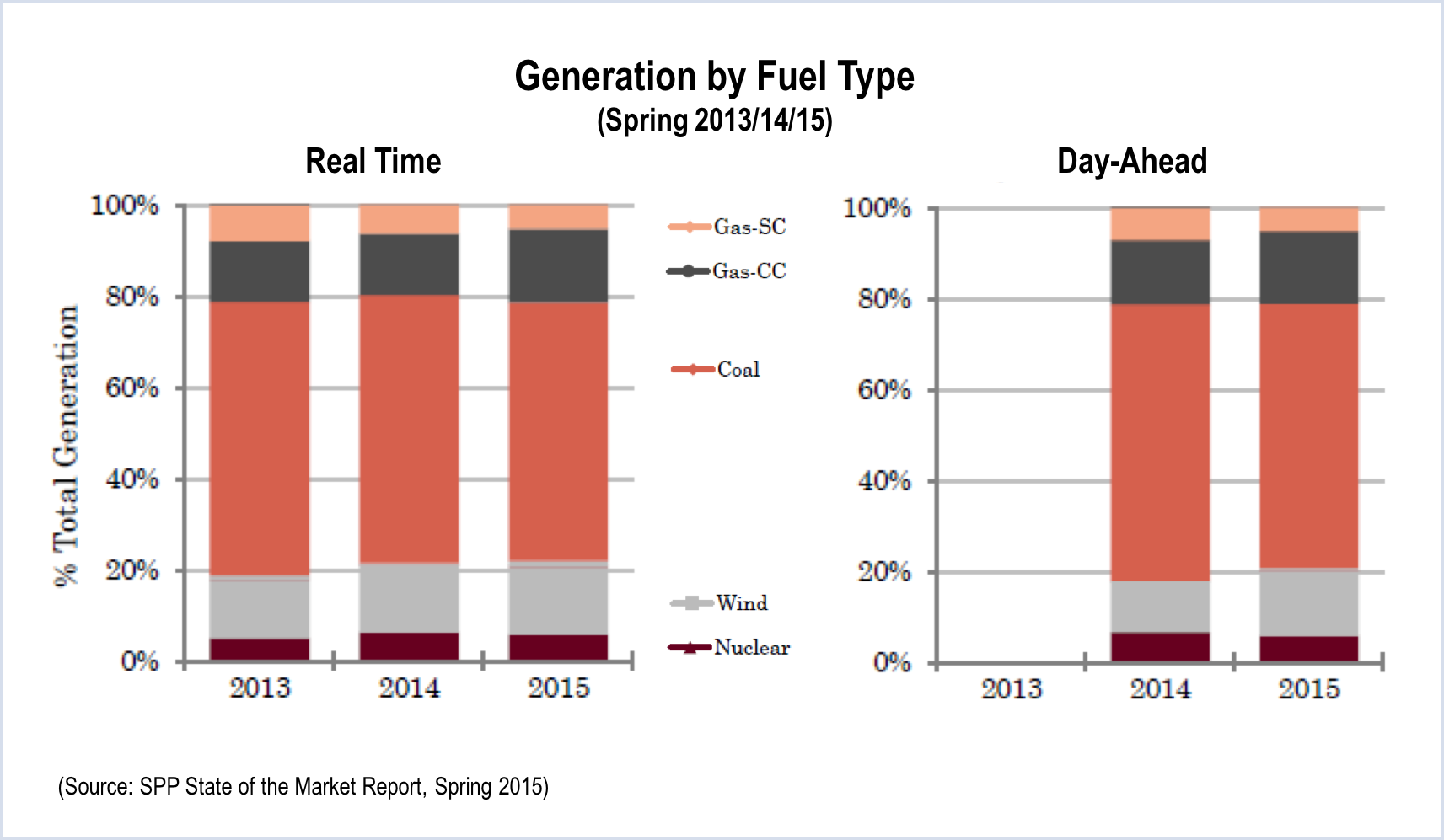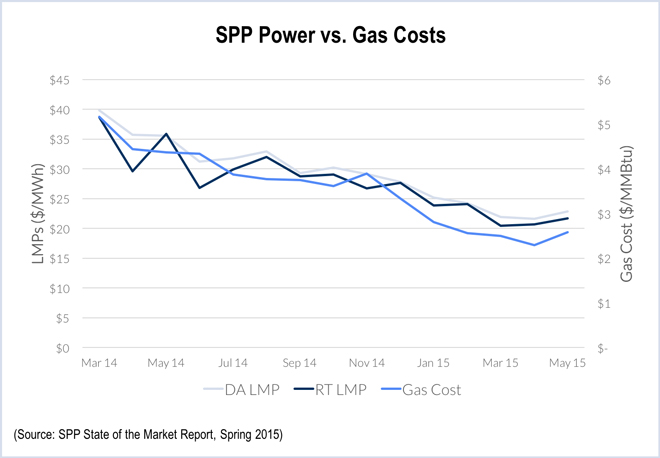By Tom Kleckner
SPP will soon file a full report on the Integrated Marketplace’s first year of performance, but its most recent quarterly State of the Market report indicates the market expansion hasn’t affected the fundamental dynamics in the region.
Electric prices are continuing to track natural gas prices, and congestion patterns “have generally remained consistent” with those under the old Energy Imbalance Service, according to the spring market report by the RTO’s Market Monitoring Unit.
The Integrated Marketplace, which launched in March 2014, includes a day-ahead market with transmission congestion rights and a reliability unit commitment process and real-time balancing market. It also incorporated a price-based operating reserve market and combined the region’s balancing authorities into a single SPP balancing authority.
The Federal Energy Regulatory Commission told SPP and its MMU to file an information report 15 months after the implementation of the market. A draft of the report is expected to be presented to the Board of Directors during its July 28 meeting.
Here are some highlights from the MMU report:
Gas, Electric Prices
Average gas prices for March, April and May were about half those for last year’s spring, averaging $2.46/MMBtu, as compared to $4.66/MMBtu in 2014. That decline has led to a corresponding decline in the LMP. Day-ahead LMPs averaged $22.13 this spring, compared to $37.03 in 2014. Real-time LMPs were $20.95, compared to $34.72 last year.
DA/RT Divergence
At the same time, the SPP system’s day-ahead to real-time price divergence hit a high of -46.9% in March. Day-ahead prices were $22.06, compared to real-time average prices of $20.46. Divergence eased to -7.4% and -7.2% in April and May, respectively; it has only been in the positive once since the Integrated Marketplace’s implementation, coming in May 2014 at 3.8% ($35.58 for day-ahead compared to $35.97 for real time).
The report partially attributed the price divergence to significant price volatility in the real-time market. “Prices are expected to be more volatile in the real-time balancing market than the day-ahead market,” the report said.
Virtual Trading
The day-ahead market’s virtual trading is intended to promote convergence between day-ahead and real-time prices, improve day-ahead efficiency and moderate market power. The report said cleared demand bids — most placed by financial-only participants — steadily increased before leveling out this spring.
SPP said gross virtual profits for the Integrated Marketplace’s most recent 12 months totaled just over $92 million, with gross virtual losses totaled nearly $71 million. It noted every Integrated Marketplace month has had a net profit from virtual transactions save for May 2014, which had a net loss of just over $700,000.
Cleared virtual bids as a percentage of reported load is averaging about 3% since the Integrated Marketplace’s implementation; cleared virtual offers as a percentage of reported load is averaging just over 4%.
Cleared virtual transactions averaged 7% of load since March 2014. April 2015 saw the largest amount of virtual transactions, at 9.75% of reported load.
Gas-Electric Price Correlation Continues
SPP also pointed to a positive metric comparing gas prices from the Panhandle Eastern Pipeline with electricity prices. (SPP uses PEPL costs as a proxy for overall gas costs in its footprint).
“Historically, gas prices and real-time prices have been highly correlated in SPP,” the report said, noting the trend has continued into the Integrated Marketplace. “Workably competitive markets should experience highly correlated gas costs and energy prices in general.”
Congestion Patterns
The report said congestion patterns have remained consistent with the Integrated Marketplace’s implementation. Newly energized transmission service has eased congestion in northwest Kansas and the Kansas City area, but congestion remains an issue in the Texas Panhandle and northwest Oklahoma, where four flowgates registered the highest shadow prices in SPP’s footprint this spring. (Shadow prices reflect congestion’s intensity on a flowgate’s path, indicating the marginal value of an additional megawatt of relief on a constraint in reducing the total production costs.)
The market report said low-cost generation north of the constraints and limited import capabilities were some of the driving factors.
Regulation Market
The report notes that SPP implemented its regulation-compensation market to comply with FERC Order 755 on March 1. The market includes payment to market participants based on changes in energy output for regulation deployment.
This March, SPP cleared more regulation mileage than necessary with a regulation mileage factor of 1.0 for both regulation up and down, according to the report. The 1.0 factor was adjusted to a more realistic value, averaging near 0.2, in April and May, resulting in fewer unused mileage make-whole payments.




